How to Grow Peppers [Everything you Need to Know]
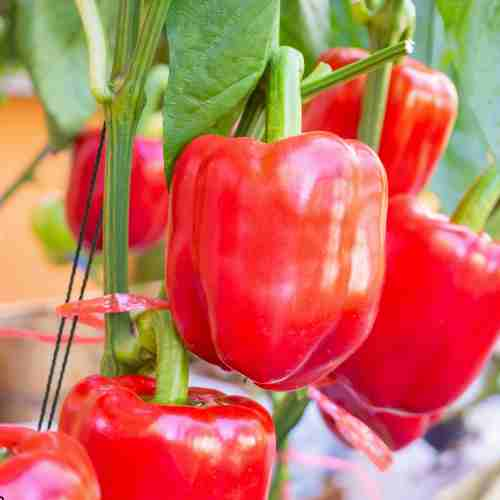
Peppers are a wonderful addition to any garden, whether you’re an experienced gardener or a beginner. They come in various shapes, colors, and levels of heat, making them versatile and exciting to grow.
From sweet bell peppers to spicy jalapeños, these vibrant vegetables add flavor, color, and a wealth of nutrients to your meals.
In this guide, we’ll explore how to grow peppers successfully, touching on all the factors that make them a suitable and rewarding crop for any home gardener.
Get our Gardening Buddy and find veggies that fit your conditions best.
You Can Grow It!
Planting Peppers
Peppers are warm-weather plants that love sunlight and thrive in temperatures between 70°F and 85°F (21°C – 29°C). They’re sensitive to cold and need a bit of special care if starting from seeds. To get a jump start on the growing season, you can start peppers from seed indoors about 8-10 weeks before the last expected frost. Choose seeds from varieties that match your preference—sweet bell peppers, spicy jalapeños, or even unique varieties like purple or chocolate-colored peppers!
When planting indoors, use seed trays or small pots filled with quality seed-starting mix. Sow the seeds about ¼ inch deep, water lightly, and keep them warm, ideally around 80°F (27°C) to promote germination. Once they sprout, place the seedlings under a grow light or in a sunny window.
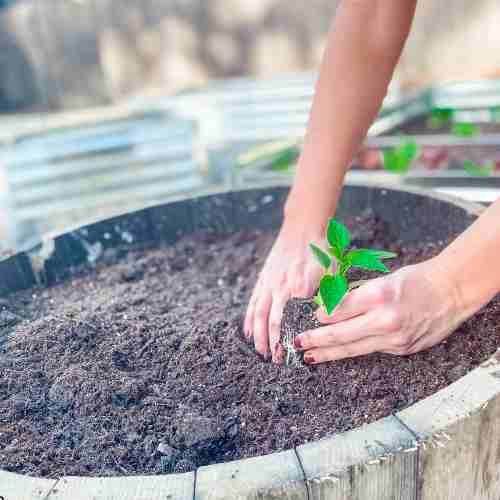
Growing Peppers
Peppers require a relatively long growing season, typically around 60 to 90 days from transplanting to reach maturity. To thrive, peppers need at least six hours of direct sunlight each day and prefer a warm, sheltered spot in your garden or on a sunny patio. Once established, they’re easy to maintain but do benefit from a few tricks:
- Spacing: Plant peppers about 18-24 inches apart to allow good air circulation. This spacing helps prevent disease and gives plants room to spread and grow.
- Support: As peppers grow and fruit, the weight of the fruit can sometimes cause branches to bend. Using small stakes or cages will help support the plants and keep them upright.
Peppers are fairly drought-tolerant, but consistent moisture is key to fruit production. Watering deeply but infrequently encourages the roots to grow downwards, resulting in stronger, more resilient plants.
When to Plant Peppers
Peppers are highly sensitive to cold, so timing is crucial. If you’re starting from seed indoors, aim to plant seeds 8-10 weeks before the last expected frost date in your region. Transplant your seedlings outside only after all risk of frost has passed, ideally when night temperatures are consistently above 55°F (13°C) and soil temperatures are above 65°F (18°C). In colder climates, you can help warm up the soil by laying black plastic over it a few weeks before planting.
If you’re buying transplants from a nursery, choose healthy, stocky plants with a few sets of true leaves but no flowers or fruit. Transplant them outdoors once the weather has warmed up.
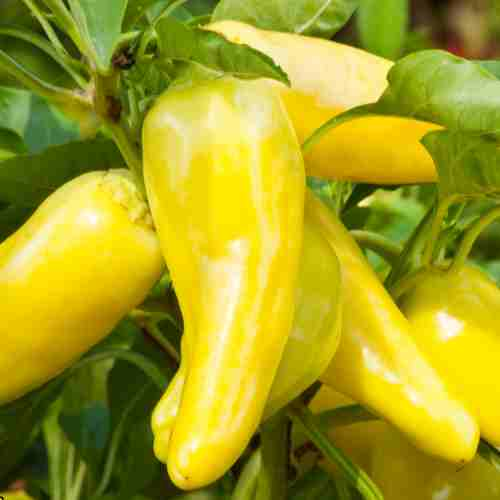
Preparing the Soil for Peppers
Peppers thrive in well-drained, loamy soil rich in organic matter. The ideal soil pH for peppers is between 6.0 and 6.8. Here’s how to prepare your soil to keep your peppers happy:
- Amend the Soil: Dig in compost or well-rotted manure to enrich the soil. This helps retain moisture and improves soil structure. If your soil is heavy clay, mix in some sand or perlite to improve drainage.
- Avoid Planting Near Other Nightshades: Avoid planting peppers where you’ve recently grown tomatoes, potatoes, or eggplants, as these plants can carry soil-borne diseases that affect peppers.
- Add Fertilizer: A balanced, low-nitrogen fertilizer can be added at planting time to give your peppers a boost. Peppers don’t need as much nitrogen as leafy greens, so opt for a fertilizer higher in potassium and phosphorus.
How to Grow Peppers in a Container
Peppers are excellent candidates for container gardening and can thrive on a sunny balcony, patio, or deck. Here’s how to grow peppers successfully in containers:
- Choose the Right Container: Peppers need space to develop strong roots, so select a container with at least 12 inches in depth and diameter. Plastic or glazed ceramic pots work well as they retain moisture better than unglazed clay pots.
- Use Quality Potting Mix: Use a well-draining, nutrient-rich potting mix formulated for vegetables. Avoid garden soil, as it can become compacted and may not drain well.
- Ensure Good Drainage: Place gravel or broken pottery at the bottom of the pot to promote drainage and prevent waterlogged roots.
- Position in Full Sun: Place the container where it will receive at least 6-8 hours of sunlight daily. Container-grown peppers will need regular watering, as pots dry out faster than garden beds. Check the soil moisture daily and water when the top inch feels dry.
With the right setup, container-grown peppers can be just as productive as those grown in the ground!
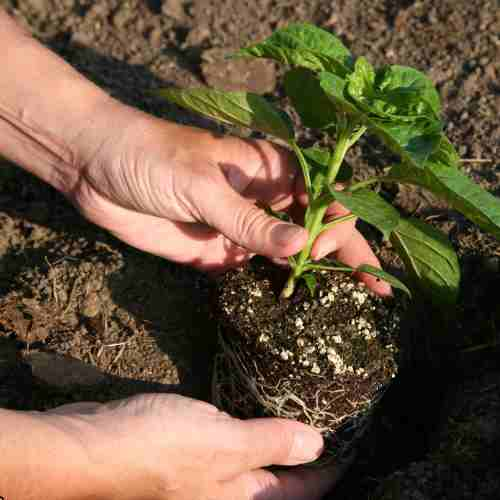
How to Care for Peppers
While peppers are relatively low-maintenance, they do appreciate consistent care. Here are some tips to ensure your peppers stay healthy and productive:
- Watering: Peppers need around 1-2 inches of water per week. Water deeply at the base of the plant rather than overhead to avoid wetting the leaves, which can encourage fungal diseases. Let the soil dry slightly between waterings to prevent root rot.
- Fertilizing: Once peppers start producing buds, feed them every two weeks with a balanced fertilizer or a tomato fertilizer high in potassium to support fruiting. Avoid high-nitrogen fertilizers, as they promote foliage growth rather than fruit production.
- Mulching: Apply a layer of mulch around the plants to retain moisture, regulate soil temperature, and reduce weeds. Mulching also helps keep the soil warm, which peppers love.
- Pruning and Supporting: Pinch off the tops of the plants once they’re about 8 inches tall to encourage bushier growth and a larger harvest. If your plants are bearing heavy fruit, use stakes or small cages to support the branches.
Monitor for pests like aphids or spider mites, especially if you’re growing in warm, dry conditions. Insecticidal soap can help keep pest populations under control.
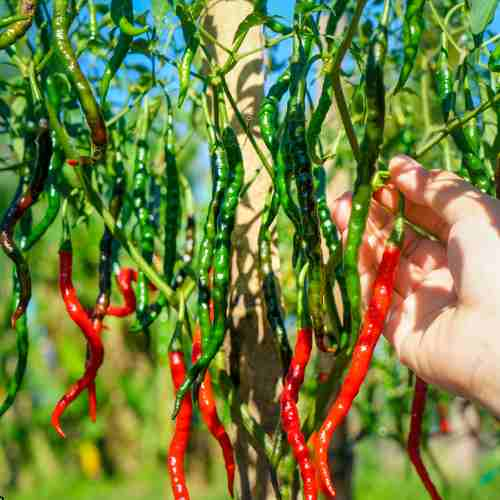
Pruning Peppers
Here’s a step-by-step to pruning your pepper plants:
- Sterilize Your Pruning Shears: To avoid spreading diseases, always sterilize your pruning tools with rubbing alcohol or a diluted bleach solution before pruning.
- Pinch Off the Growing Tip: When the plant reaches 6-8 inches in height, pinch or snip off the main stem just above a set of leaves. This encourages the plant to produce more branches and a bushier structure.
- Remove Suckers: As the plant continues to grow, you may notice small side shoots, or suckers, developing between the main stem and the branches. Remove these to prevent the plant from expending too much energy on non-fruiting branches.
- Thin Out Crowded Foliage: As the plant grows larger, thin out any overly crowded branches to improve airflow. This helps reduce the risk of fungal diseases and allows sunlight to reach more parts of the plant.
- Cut Back Damaged or Yellowing Leaves: Remove any leaves that appear yellowed, damaged, or diseased. This not only keeps the plant looking tidy but also promotes healthy growth by redirecting nutrients to the healthy leaves and developing fruit.
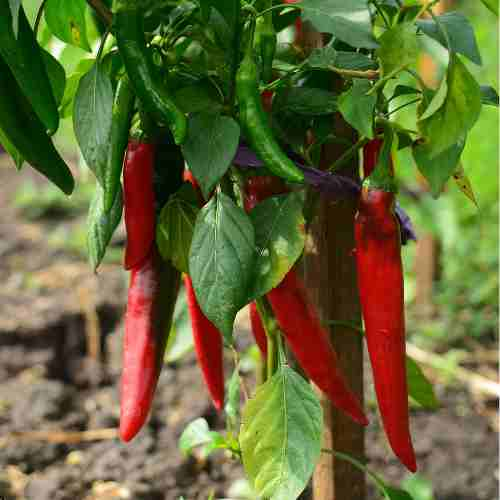
Harvesting Peppers
Peppers are ready for harvest once they reach full size and are firm to the touch. You can pick peppers when they’re still green, but leaving them on the plant longer allows them to ripen fully, changing colors to red, yellow, or orange, depending on the variety. Ripe peppers have a sweeter flavor and higher vitamin content.
For hot peppers, the spiciness often intensifies as they ripen. Use clean, sharp scissors or pruners to cut the peppers from the plant, as pulling them off by hand can damage the stems.
Regular harvesting encourages more fruit production, so keep picking peppers as they mature to maximize your yield!
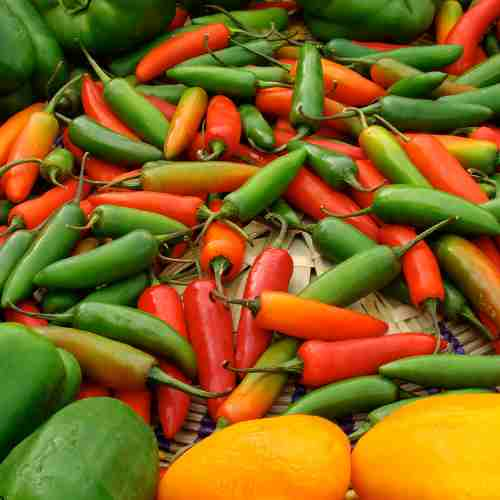
Storing Peppers
Once harvested, peppers can be stored in the refrigerator for up to 10 days. To maximize storage life, keep them in a perforated plastic bag or loosely wrapped in paper towels to retain moisture. For longer-term storage, you have several options:
- Freezing: Slice peppers into strips, spread them on a baking sheet to freeze individually, then transfer them to an airtight container or freezer bag.
- Drying: Hot peppers can be air-dried or dehydrated, then stored in airtight containers for use in cooking.
- Pickling: Pickled peppers are a tasty addition to sandwiches, salads, and snacks. Simply blanch peppers, place them in jars, and cover with a vinegar brine to preserve their flavor.
Peppers are incredibly versatile in the kitchen and store well when preserved, allowing you to enjoy your harvest throughout the year.
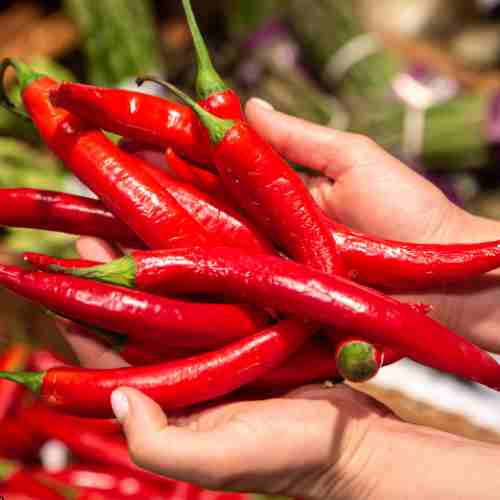
Peppers Can Fully Grow Indoors
One of the unique qualities of peppers is their adaptability to indoor growing.
Unlike many other vegetables that require the full strength of the sun outdoors, peppers can thrive indoors if given enough light and warmth.
By using grow lights, a sunny windowsill, or even a small indoor greenhouse, you can provide the environment they need to flourish year-round. Growing peppers indoors not only allows for year-round harvests but also offers better control over pests, temperature, and other factors that might be challenging outdoors.
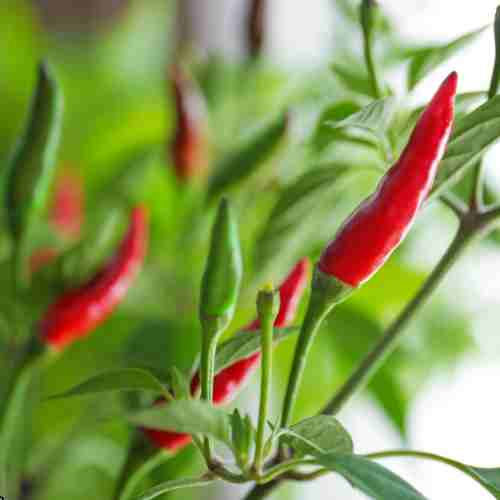
Peppers Are Great for Vertical Growth
If space is an issue, peppers can easily be trained to grow vertically.
This makes them an excellent option for gardeners who have limited room, such as balcony or patio gardeners. By using stakes or small trellises, you can guide pepper plants upwards, ensuring that they receive adequate airflow and light. Vertical growth also helps prevent soil-borne diseases and pests, keeping your plants healthier and more productive. Plus, it allows you to maximize your space, which is particularly useful for urban gardeners.
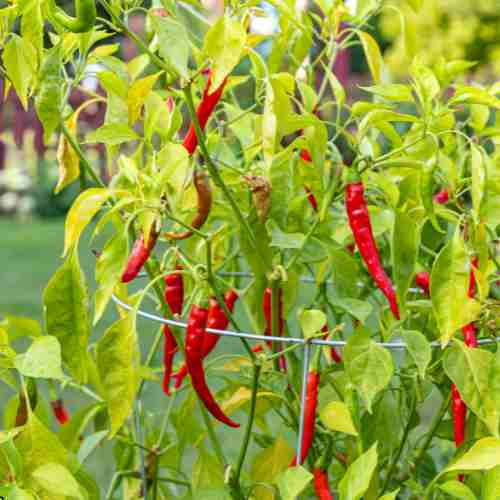
Peppers Are Low-maintenance
Peppers are known for being relatively low-maintenance once they’re established. Unlike many demanding crops, they don’t require constant attention or frequent fertilizing.
With the right balance of soil, water, and sunlight, they can grow without much intervention. Mulching around the plants helps retain moisture, while a balanced fertilizer applied at key growth stages is usually enough to keep them happy.
Their resilient nature makes peppers a great choice for anyone who wants the satisfaction of growing their own food without a lot of hassle.
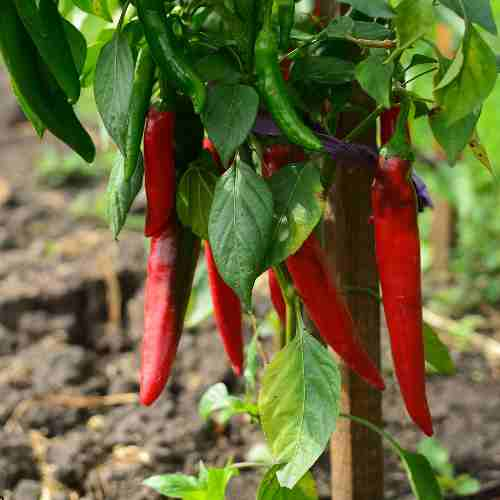
Peppers Have Minimal Watering Needs
Compared to some other popular vegetables, peppers have moderate watering needs. They prefer a consistent level of moisture but are quite forgiving if you happen to miss a watering session. Allowing the soil to dry out slightly between waterings is ideal, as overwatering can lead to root rot and other issues.
Drip irrigation or soaker hoses can be a perfect way to meet their needs efficiently, ensuring that water is delivered directly to the roots without waste or vapor.
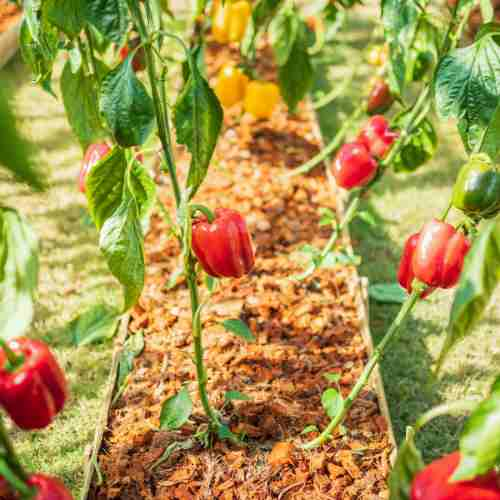
Peppers Are Pest and Disease Resistant
Peppers have the advantage of being fairly resistant to many common pests and diseases.
While no plant is entirely immune, peppers tend to have fewer problems compared to other vegetables. This resistance makes them a perfect choice for beginner gardeners who may not be as familiar with pest management techniques.
Companion planting with herbs like basil or marigolds can also deter pests naturally, making it even easier to grow a healthy pepper crop without relying heavily on pesticides or intensive care.
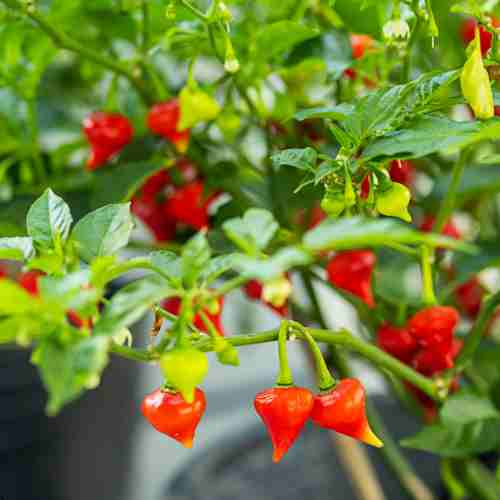
Choosing the Right Pepper Variety
When it comes to growing peppers, choosing the right variety is key. Peppers come in a wide range of flavors, from sweet bell peppers to fiery habaneros.
Consider your climate, taste preferences, and intended use when selecting a variety. Sweet peppers like bell peppers are great for salads and stuffing, while hotter varieties like jalapeños or cayenne can be used to add spice to your dishes.
Some pepper varieties are better suited for indoor or container gardening, so be sure to choose a type that matches your growing environment.
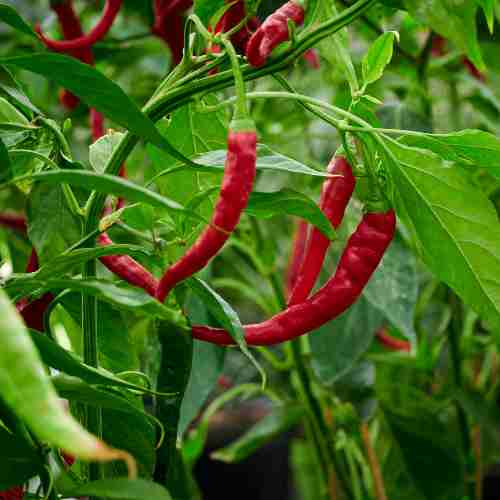
Soil Requirements for Peppers
Peppers thrive in well-drained, nutrient-rich soil. The ideal soil should be loamy with a pH between 6.0 and 6.8.
Before planting, it’s a good idea to test your soil and amend it if necessary. Adding compost or well-rotted manure can improve soil structure and provide essential nutrients.
Peppers also benefit from soil that retains moisture without becoming waterlogged, so adding organic matter can help strike the right balance. Raised beds or containers with quality potting mix can also provide an optimal growing medium for peppers.
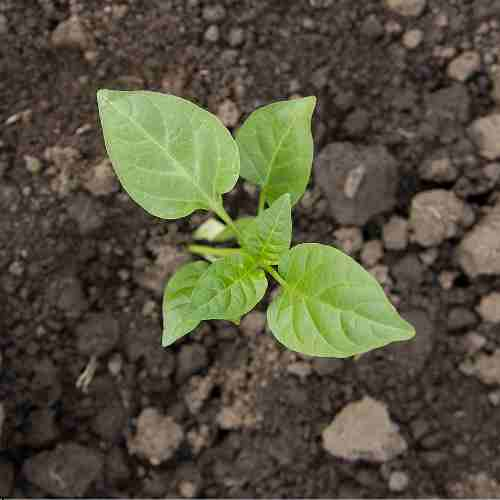
Harvesting and Storing Peppers
Knowing when to harvest peppers is important for getting the best flavor and quality.
Peppers can be harvested at different stages, depending on your preference. Green peppers are typically less sweet and have a more bitter taste, while letting them ripen to red, yellow, or orange will result in a sweeter flavor.
Use a sharp knife or scissors to cut peppers from the plant to avoid damage. Once harvested, peppers can be stored in the refrigerator for up to two weeks. For longer storage, consider drying or freezing them to preserve their flavor.
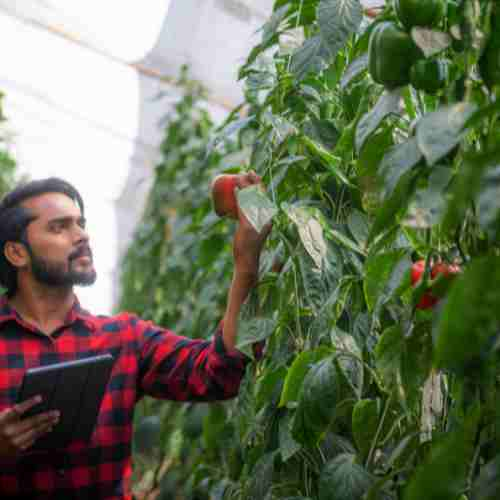
Pepper Fertilizing Tips for Optimal Growth
To achieve optimal growth, peppers benefit from regular but balanced fertilization. A low-nitrogen fertilizer works well, as too much nitrogen can lead to excessive leaf growth at the expense of fruit production.
Applying a balanced fertilizer during planting and again when the first flowers appear will support healthy growth and fruit development.
Liquid fertilizers or compost tea can also be used throughout the growing season to give peppers an extra boost. Avoid over-fertilizing, as this can lead to nutrient imbalances and affect fruit quality.
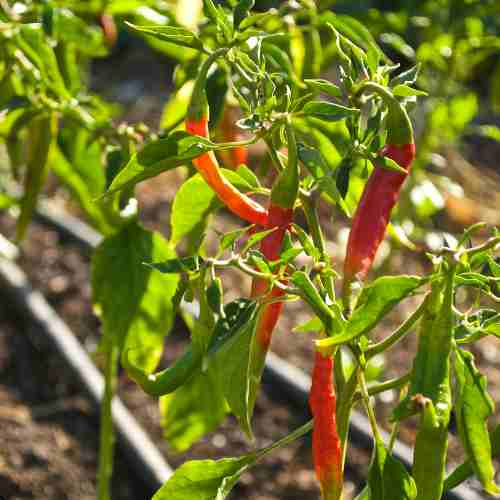
Find the Vegetables that are Best for you
Growing peppers can be a rewarding and fulfilling gardening experience. Their versatility, low maintenance, and suitability for indoor and vertical growing make them accessible to just about anyone, regardless of the space available.
With minimal watering needs and a natural resistance to pests and diseases, peppers are an ideal plant for both beginners and seasoned gardeners.
So why not add a pop of color, flavor, and heat to your garden by growing your own peppers? You’ll enjoy fresh, vibrant produce that elevates your meals and brings satisfaction to your green thumb.
Get our Gardening Buddy and find veggies that fit your conditions best.
You Can Grow It!
Partners and Sponsors
We are forever grateful to our partners and sponsors. Send an email to team @ strongecho.com and let’s see how we can grow each other’s impact!





